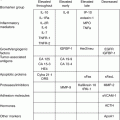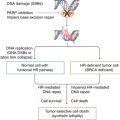Level of evidence
Factor
Most frequently observed observation
Strong
Age
Younger age—more distress
Disease stage
More advanced disease—more distress
Time since diagnosis
Shorter—more distress
Disability status
Worse—more distress
Physical symptoms
More symptoms—more distress
Quality of life
Poorer quality of life—more distress
Some
Perceived social support
More social support—less distress
Inconclusive
Active chemotherapy/follow-up
Chemotherapy—more distress
Phase of treatment: initial/recurrence
Recurrence—more distress
Site of cancer
Ovarian more distress
Previous level of depression
More—more distress
Previous level of anxiety
More—more distress
Previous level of intrusive thoughts
More—more distress
The studies reviewed here provide insight into the distress associated with ovarian malignancies, but it is important to acknowledge limitations in the research. These include medical information not being systematically reported in psychological studies (e.g. type of treatment). Where it is reported, patients have often been asked to provide this information which may result in the collection of erroneous data. Vice versa, in medical studies with a psychological component, socio-demographic information about the sample is often excluded [17]. In addition there is considerable variation in measures of distress used with some emotional subscales of general quality of life assessment being used as reports of psychological well-being. Debate surrounds the value of popular assessment tools including what the clinical cut-offs should be and which measures are most appropriate for which stage of the cancer trajectory [52, 53]. Also no studies used formal psychiatric interviews to determine distress in patients though this is regarded as the gold standard for diagnosing depression.
Although larger-scale ovarian population data is becoming available from some countries [45, 46], many of the studies of ovarian cancer have involved small sample sizes without control groups; instead, data has mostly been compared to general population data available for the specific measures of distress used [17].
Further research is needed to explore the variables associated with distress related to ovarian cancer which rectify the issues outlined above. In particular more longitudinal studies would be a valuable addition. In addition, a systematic review [42] of follow-up care strategies following primary treatment for ovarian cancer points to the need for randomised trials with an emphasis on quality of life and psychological well-being in addition to survival outcomes and cost-effectiveness.
Detecting and Managing Psychological Distress Related to Ovarian Cancer
Although the emotional challenges associated with cancer have been well documented, many patients continue to express a need for psychological support [54–57]. In the UK, USA and Australia, international guidelines have been developed to provide recommendations and evidence-based advice on supporting cancer patients and their families throughout the disease trajectory [1, 58, 59]. These all outline the need for cancer services to regularly assess patients’ distress levels and for any detected problems to be addressed by staff with the appropriate degree of training skills and knowledge.
The guidance documents also recommend stepped care or triaged systems where patients are referred when appropriate to the most suitable specialist support (e.g. psychologist, counsellor, social worker). This approach highlights the role that all health-care professionals caring for cancer patients can have in the detection and management of cancer patients’ distress. Although more specialist psychological care should be provided by trained individuals, members of nursing staff, health-care workers and doctors can all assist with low- or mid-level distress by communicating effectively and compassionately with patients, being vigilant to any signs that warrant exploration and referring to other professionals where necessary. In England, advanced communication skills training is mandatory for all staff involved with cancer and palliative care [60]. In concordance with the general supportive guidance for all cancer populations, specific recommendations for gynaecological cancers call for oncology teams to practise a high standard of communication and information provision to minimise patient anxiety. Along with patients being given the name of a nurse trained in counselling, the maintenance of close links with psychology and psychiatry is advised to ensure psychological support is available at every stage of care.
Determining which patients require support for psychological distress can be challenging for a number of reasons. Patients can be unwilling to disclose problems, and professionals may focus on the medical management of cancer [61]. The guidance documents described above recommend the routine use of screening for psychological distress, and a number of studies show that standardised self-reported tools correctly identify a larger proportion of distressed patients than health professionals [61–63]. There is also evidence from randomised trials indicating that the provision of screening tool information to oncologists leads to improvements in patient’s emotional well-being [64–67]. However, translating the value of systematic screening for distress into routine cancer practice is not simple. Stumbling blocks to routine implementation include practical considerations related to resource and financial limitations and the ability to utilise new technologies of data collection (such as using touch screen computers to collect information from patients). Surveys from the USA and UK show that many cancer centres and professionals are not using screening tools to detect distress [68, 69]. A recent qualitative study of cancer professionals found that feelings of reticence to use screening tools centred on the perceived costs to services and the ability to successfully cope with identified distress [70]. There is also continued debate about the most appropriate screening measure for cancer distress across the disease trajectory [53]. The NCCN endorse the use of the distress thermometer (DT) as a practical and simple approach to routine screening [1]. The DT assesses distress on a 0–10 scale with a problem list to indicate reasons contributing to distress levels. It has been widely validated and used in a variety of cancer populations including gynaecological patients [71–73].
In terms of managing distress, there is a question as to the degree to which limited psychological resources should focus on those exhibiting persistent distress or if interventions should more generally target patients early in stages of treatment to prevent psychological morbidity developing in at-risk groups. The results from studies demonstrating the positive impact of ovarian cancer have led to the idea of interventions to promote well-being via supporting the mechanisms for development of positive meaning from a diagnosis of ovarian cancer. Recently the Meaning-Making intervention (MMi) has been pilot tested in a small number of newly diagnosed advanced-stage ovarian cancer patients [74]. In this randomised controlled trial (RCT), 12 patients received an intervention consisting of three to four sessions with a therapist which focussed on (1) reviewing the impact and meaning of the cancer diagnosis, (2) exploring past significant life events and successful ways of coping and (3) discussing life priority and goal changes that give meaning to one’s life. At the end of the trial, compared to controls the intervention group reported a better sense of meaning in life. There was some evidence that fewer women in intervention group met the clinical cut-off for anxiety and depression on the HADS, but further large-scale assessment of the clinical impact of the MMi is required. Consideration into how resource intensive interventions of this kind might be modified for use with large numbers of patients in routine practice would also be necessary.
A recent review of psychosocial interventions for gynaecological cancer patients assessed findings from 22 controlled trials [75]. Emotional adjustment was assessed in all the studies, and interventions included psychotherapy, counselling, relaxation/complementary therapies and provision of education and support. The results were inconclusive due to limitations in research design; however, there was some evidence that counselling and psychoeducation were beneficial for mood and distress. As with Arden-Close et al.’s [17] systematic review, Hersch and colleagues found that many studies were weakened by small sample sizes and a lack of longitudinal research, meaning the longer-term impact of interventions, remains unknown. Kew et al.’s [42] review of follow-up care strategies in ovarian cancer services concludes there is a need for prospective trials to evaluate interventions during follow-up that may help reduce anxiety and promote return to normal functioning.
Psychological Distress and Hereditary Ovarian Cancer
The Impact of Genetic Counselling and Screening
Alongside the distress associated with a diagnosis of ovarian cancer and coping with the disease and treatment, women with a family history of the disease and an increased hereditary risk are confronted with challenging decisions about managing the threat. Initially focus can centre on whether or not to receive genetic counselling and screening. Choices also need to be made about whether or not to disclose information to or involve other family members who may also be at risk. These issues can place increased burden on the patients and family members, and if a genetic predisposition is found to be present, additional potentially stressful medical care decisions are required. A range of unique emotional consequences for people at hereditary cancer risk are possible with feelings of uncertainty sadness, worry, anxiety, anger and guilt being commonplace [76].
There has been substantial research conducted in the area of the psychological impact of screening for hereditary cancer perhaps because the BRCA1/2 genes are linked to the development of both breast and ovarian cancers. Although the positive implications of screening include being able to encourage informed health choices for managing cancer risk, researchers have been conscious that being faced with this threatening information may have adverse consequences on psychological functioning [77]. Although not all individuals tested for genetic mutations will be identified as carriers, the process of testing in itself can still be emotionally demanding. In addition a subset of people will receive inconclusive results where neither BRCA gene is identified, but there may still be a hereditary cancer risk, the genetic cause of which being unknown. How these people process and understand their test results and how this affects them emotionally is not well understood as the population has been identified as being particularly under researched [78].
Women with a family history of ovarian cancer who seek advice and genetic screening have been found to have higher levels of anxiety and depression compared to the general population [79–81]. The levels of distress observed in these groups highlight the importance of providing emotional and psychological support integrated as standard in screening programmes. A variety of studies have used measures specifically designed to assess distress related to cancer risk or genetic testing, and perhaps unsurprisingly many have shown that women found to test positive for genetic mutations report greater distress than those with negative results [82–84].
Other studies have however not routinely produced comparable findings regarding the impact of testing on distress levels. Inconsistencies in research results led to a meta-analysis of data to ascertain the extent of general anxiety and cancer-related distress in people undergoing BRCA1/2 mutation screening and to explore differences between carriers, non-carrier groups and those with inconclusive results [85]. Hamilton and colleagues synthesised the data from 20 studies that had all prospectively assessed distress before genetic testing and up to 1 year after. Collectively the studies included data from 2,171 participants, the majority were female (95.2 %), 664 were gene mutation carriers, 794 non-carriers and 713 were given inconclusive test results. In line with past findings and Baum et al.’s [86] framework for interpreting responses to genetic testing from a stress and coping perspective, the authors predicted that non-carriers would experience a decrease in distress after receiving results and that carriers and those with inconclusive results would experience stable or increased distress with levels lessening with time as individuals adapted. The findings showed the importance of time for all groups. As predicted, distress levels of carriers increased slightly after receipt of test results but returned to pretest levels over time. Carriers with a personal history of cancer experienced less distress than carriers who had not. Non-carriers reported decreases in general and cancer-specific distress soon after testing, only the latter persisted over time. Most surprisingly, the group with inconclusive results showed decreases in cancer-related distress similar in magnitude to that reported by non-carriers. This led Hamilton et al. to question if this group is misinterpreting their results and considering themselves to be at a reduced cancer risk. Indeed, qualitative interviews with women with a previous diagnosis of breast or ovarian cancer who had undergone BRCA1/2 screening found that those with inconclusive results did not correctly comprehend its meaning and thought the hereditary risk was not present in their family [87]. Further research is required in this area to clarify the emotional impact of inconclusive genetic testing and how this is associated with individual perceptions of cancer risk.
Hamilton et al.’s [85] meta-analysis also provides evidence of some national variation in carrier distress levels. Specifically, carriers in the USA reported greater decreases in distress compared to those in Europe or Australia. This may be an indication of the impact of the varying health services available in different countries. In the USA, issues surrounding health insurance and the costs associated with any ongoing follow-up care by those found to be at risk of a hereditary cancer may add to concerns and anxieties about personal health. Thus, the non-carrier group may experience an enhanced sense of relief on receiving test results. Overall the results show that genetic testing for BRCA1/2 mutations does have emotional consequences, but these appear to be minimised with time. It is important to note that the authors highlight that the participants in the samples analysed had typically received extensive genetic counselling which will have played a role in supporting the challenges and consequences of the testing process.
How families as a whole communicate and manage issues surrounding genetic risk is an important consideration with considerable implications for how personal risk is understood and for the psychological health of individual members. Within the cancer population generally more open communication has been linked with less distress in patient and family members [88, 89]. Less openness to discuss genetic test results with family members has been associated with more cancer worry and distress in female BRCA1/2 carriers 5 years after tests were conducted [90]. Mellon and colleagues [91] explored communication and decision making about inherited cancer risk in a series of focus groups involving family pairs consisting of breast or ovarian cancer patients with increased hereditary risk and a close female relative. The women reported using different communication strategies to cope with the cancer experience; some openly discussed it, whereas others avoided conversations due to fear of making the risk too real. Many women were misinformed or unknowledgeable about the role genetics and heredity play in cancer risk and their understanding centred on their own personal experiences of cancer in the family. Concerns centred on the health of other family members, increased vigilance for detecting any signs of cancer, and in some cases the fear of finding out their cancer risk prevented them pursuing testing. Similar responses from families uncertain about testing were also detected in a qualitative study conducted by Dancyger et al. [92]. The challenge for clinicians caring for at-risk patients is in understanding the psychological variables and family context in which individuals are making personal decisions about testing.
Psychological Implications of the Medical Management of Hereditary Risk
For women found to carry the genetic mutations putting them at risk of ovarian cancer, the two major medical strategies available are increased surveillance to improve the chances of early cancer detection (routine assessment of CA-125 levels and transvaginal ultrasound) or risk-reducing salpingo-oophorectomy (RRSO, surgical removal of the healthy ovaries and fallopian tubes) [93]. Surveillance has not to date proven to be a highly successful option, as it has led to an increased number of false-positive test results or the detection of ovarian cancer at later stages [94–96].
Many women are reluctant to take the RRSO option and in the UK Familial Ovarian Cancer Screening Study (UK FOCSS) [97] is an ongoing trial due to close in 2013 assessing the clinical effectiveness of familial ovarian cancer screening using CA-125 markers (measured every 4 months) and annual ultrasound scans. The trial also includes a psychosocial component to explore the psychological impact of screening (PsyFOCS). A recently published study from this psychosocial arm explored the factors associated with women dropping out of the screening programme in order to have RRSO [98]. Lifford and colleagues found that both clinical and psychological variables were associated with women opting for surgery; specifically women who had in the past been recalled for further tests (as a result of participating in the screening programme) and greater cancer-specific distress were both significant variables in the uptake of surgery. In a recent review of factors associated with women opting for RRSO [99], a range of significant demographic and psychological variables were identified. Women who were older, had children, had a family history of ovarian cancer or a personal history of breast cancer, had prophylactic mastectomy and were BRCA1/2 mutation carriers were all more likely to undergo RRSO. Greater perceived risk of ovarian cancer and cancer-related anxiety were also predictive. The authors conclude the design of decisions aids for women considering prophylactic surgery should cover a range of issues to ensure that demographic and medical background of women are addressed along with psychosocial variables surrounding views of cancer risk.
The guidelines for RRSO promote the use of surgery in at-risk women who have completed child bearing [100]. The negative consequences of surgery include the general risks associated with the procedure, the impact of hormone deprivation, leading to immediate menopause, as well as the continued risk of breast and peritoneal cancer which RRSO cannot completely eliminate. These reasons are likely to lead to a high percentage of women who choose not to undergo the procedure [99]. The impact of RRSO on psychological well-being is uncertain. Researchers in the UK found that women who have surgery reported worse emotional and physical symptoms than those remaining on screening programmes, whereas the levels of cancer worry were comparable between the two groups [101]. This small study (which retrospectively investigated 29 women who had received RRSO and compared them to 28 on screening) also reported that problems were worse in women who were premenopausal at the time of RRSO which may be a reflection of the impact of coping with unfamiliar and debilitating menopausal symptoms. Younger age at the time of RRSO has also been associated with greater anxiety. There is however also evidence of psychological benefit of RRSO despite the physical side effects and potential risk of impairments to quality of life and body image [90, 99]. Michelsen et al.’s [102] observational questionnaire study of 361 Norwegian women who had undergone RRSO found that that women reported more somatic morbidity (including osteoporosis, palpitations, constipation and pain) but comparable anxiety and lower depression (measured using the HADS) compared to age-matched population data. Although many women report a high degree of satisfaction with their decision to go ahead with RRSO [99, 103], the need for ongoing counselling, support and information for women who choose to either undergo RRSO or screening is essential [104].
Stay updated, free articles. Join our Telegram channel

Full access? Get Clinical Tree








